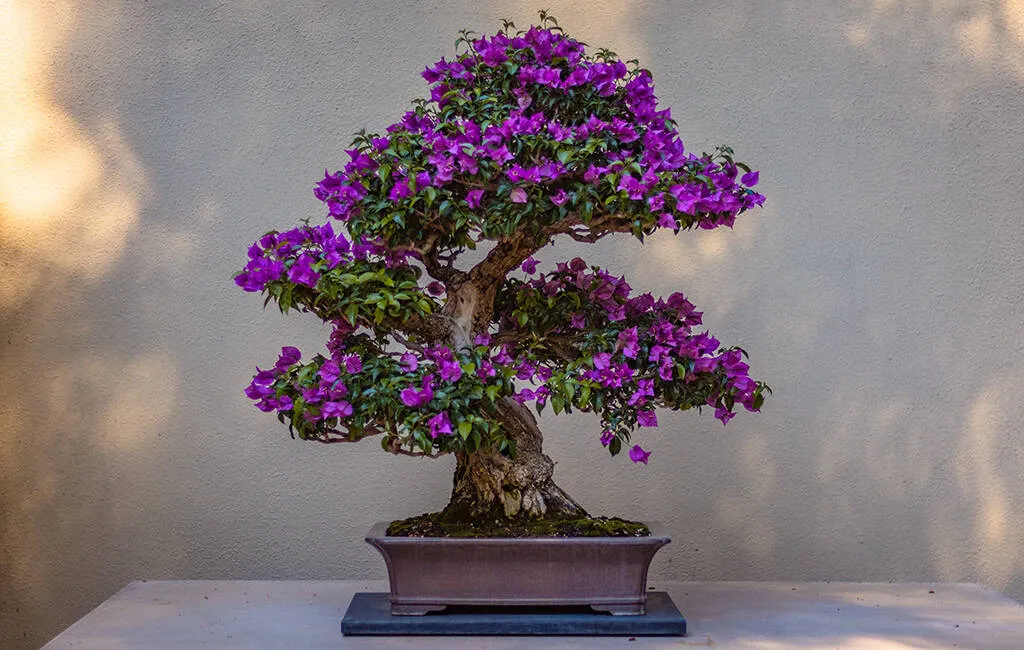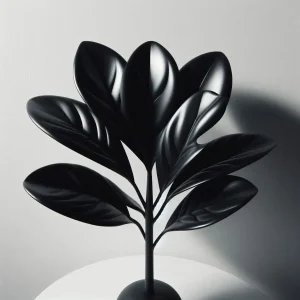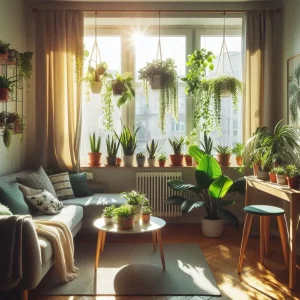Every plant has its own specific water needs that differ from those of other plants. For example, if you water a bonsai tree at the same time as a ginseng bonsai and water them twice a week, you’ll easily lose your beautiful plant. In this article from the Flower and Plant Magazine, we intend to teach you the proper method of watering bonsai trees so that you can understand your plant and its needs well, and witness its growth after watering your miniature tree.
The process of watering bonsai:
Page Contents
ToggleTemperature of the Environment:
Temperature affects the frequency of watering bonsai. In warmer weather, the tree needs more water to supply its branches and leaves; thus, it requires more watering. Most bonsai trees grow outdoors, but if yours is indoors, the room or workspace temperature affects how often it needs watering.
Size of the Bonsai:
Smaller bonsai trees usually grow in smaller pots with less soil. Since soil retains water, smaller bonsai trees generally need more watering compared to larger ones.
Windiness of the Environment:
If you keep your bonsai tree outdoors, consider the windiness of the area. In windy conditions, the tree loses more water through its leaves. On windy days, you may need to water more frequently or provide a sheltered area for the tree.
Type of Soil Used in the Bonsai:
Bonsai soil is typically a mixture of various components, and some soil mixtures dry out faster than others. A well-draining soil mix is preferable for bonsai health, but it may also mean you need to water more frequently.
When is the best time to water a bonsai tree?

The moisture level of the soil indicates the timing for watering a bonsai tree. The health of your bonsai plant largely depends on watering it at the right time because both under-watering and over-watering can harm your plant. The moisture content of the soil is your best guide to determine the timing for watering your bonsai. Whenever the top 2 to 3 centimeters of the soil are dry, it means it’s time to water your bonsai.
Here’s a quick guide for watering medium-sized bonsai trees in appropriately sized pots:
| Bonsai Type | Watering Method |
| Ginseng Bonsai | Once every 2 days |
| Ficus Microcarpa | Water after soil dries out |
| Ficus Benjamina | Water after soil dries out |
| Adenium | Water after soil dries out |
| Crassula | Water after soil dries out |
| Schefflera | Water after soil dries out |
| Yucca | Keep soil moist in summer, water after soil dries out in winter |
| Bougainvillea | Water after soil dries out |
| Schefflera | Water after soil dries out |
Remember, these are general guidelines and may vary based on factors like climate, humidity, and individual plant needs. Always check the moisture level of the soil before watering your bonsai trees.
Watering Method for Bonsai Trees in Different Seasons
You surely know that as the weather gets warmer, pots lose their moisture more quickly, and indoor plants in warm seasons like spring and summer require more frequent watering compared to colder seasons. This is because the heat causes the soil to dry out faster. To accurately gauge watering needs, use the touch method for a while, and then follow these guidelines.
The best watering schedule for bonsai trees in summer is usually recommended to be twice a week after ensuring that the soil is dry.
If you want your bonsai to always stay fresh, avoid excessive or insufficient watering.
read more:24 Houseplants for who have dog as a pet
Watering bonsai trees in cold seasons such as autumn and winter:

Bonsai growth is not as active during cold seasons like spring and summer(fall and winter), and the plant goes into a dormant and resting period during these times; therefore, it requires less frequent watering, typically once a week.
The most principled methods for watering bonsai plants typically involve the following two approaches, with the first method being preferred due to its simplicity and effectiveness.
The simplest and most common way to water a bonsai is to do so slowly and gently until you are sure its roots are thoroughly moistened and water drains out of the drainage holes at the bottom of the pot. Drain any excess water from the saucer underneath the pot to prevent the tree’s roots from rotting.
Another method used for watering bonsai is known as immersion watering. In this method, you place the pot of the plant into a container filled with water. The bonsai pot should be submerged to a level where the water does not saturate the plant itself, only reaching the surface of the pot to avoid excessive moisture and rotting. The pot should be removed from the water container when air bubbles cease to emerge, indicating that the bonsai has absorbed sufficient water.
The best bonsai tree for beginners, according to the website allthingsbonsai, is:
What is the best bonsai tree for beginners? Bonsai beginners often ask us what is the best bonsai tree for beginners. The answer is, it depends! Success with bonsai depends mainly on two things. Location and watering However, some tree species are certainly easier than others.
Here’s a list of vital and essential points regarding bonsai watering; the lifeblood of your plant is in your hands:
- Never water bonsai with cold water as it can shock and stress the plant.
- Water for bonsai should resemble rainwater and be free from salts and chlorine. Avoid using tap water whenever possible as it contains high levels of salts, which can lead to white spots on the bonsai over time.
- If you don’t have access to filtered or chlorine-free water, let tap water sit for about 24 hours to allow the chlorine to dissipate. Then, use this water for watering your bonsai, or alternatively, use boiled and cooled water.
- It’s best to water bonsai in the early morning to ensure the plant doesn’t remain dry and dehydrated during the hottest hours of the day. Avoid watering bonsai when sunlight is too intense, as the rays may scorch the plant’s leaves.
- Make sure the pot and soil chosen for your bonsai have proper drainage. Otherwise, excess water won’t drain out, leading to root rot in the long run.
You’ve listed some excellent and essential points regarding bonsai watering, ensuring the vitality of your plant:
- Avoid Cold Water:Never use cold water for watering bonsai, as it can shock and stress the plant.
- Quality of Water:Bonsai should be watered with water that resembles rainwater, free from salts and chlorine. Tap water, with its high salt content, can cause white spots on the bonsai over time. Hence, it’s best to avoid it whenever possible.
- Chlorine Removal:If filtered or chlorine-free water isn’t available, let tap water sit for about 24 hours to allow the chlorine to dissipate. Alternatively, you can use boiled and cooled water for watering your bonsai.
- Timing of Watering:Optimal watering time is early morning to prevent the plant from remaining dry and dehydrated during the hottest hours of the day. Avoid watering bonsai when sunlight is too intense, as it may lead to leaf scorching.
- Proper Drainage: Ensure that the chosen pot and soil for your bonsai have adequate drainage. Insufficient drainage can cause water to accumulate, leading to root rot over time.
FAQ
Is watering bonsai flowers according to a fixed schedule the right approach?
No. An important point to remember when watering bonsai is that it cannot be carried out according to a fixed schedule because maintenance conditions such as temperature, soil type, and light exposure vary for each bonsai plant in different environments. These environmental differences create different water needs for each plant.
What are the signs of under-watering in bonsai?
Bonsai plants show signs of under-watering by shedding leaves, becoming dry, and exhibiting a brittle texture.
Is misting a suitable method for watering bonsai flowers?
No. Misting is a method to provide moisture to bonsai by spraying water on the plant’s leaves, but in proper bonsai watering, the soil of the plant is watered.







